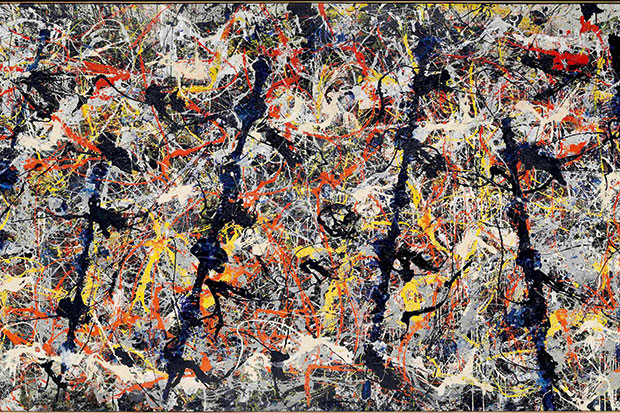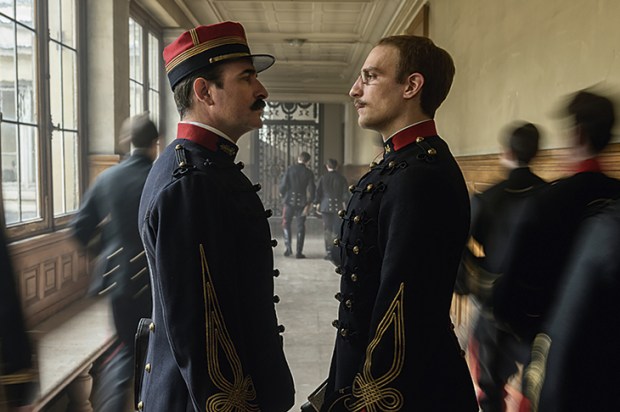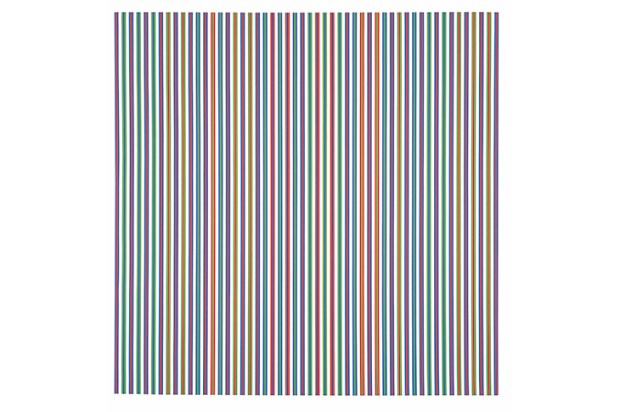Eventually,’ said Michelangelo Pistoletto, ‘it became a movement. In fact, I believe that arte povera was the last true movement. Since then all artists have been individuals.’ We were sitting one baking hot day last month in his cool study in Biella, a small town in the foothills of the Alps where he has established a huge museum and foundation in a series of disused 19th-century textile mills. He was discussing the group of Italian artists of the 1960s of which Pistoletto himself was a founding member.
Arte povera is an umbrella phrase that covers a number of diverse artists, several of them marvellous, who emerged in Italy about half a century ago. What they had in common was more a mood than a style exactly. Their work ran parallel to that being produced concurrently in many different places — by Richard Long in Britain, for example, and Joseph Beuys in Germany.
It often involved using real objects —rocks, cloth, pieces of metal — not to make images of other things by, say, carving marble into a human figure; nor even by making an abstraction — such as a geometric form. But using these materials just as themselves.
Thus, a stone might become part of a work of art about stones — their weight, the way that their surface has been eroded by time. This was an international tendency, but the artists of arte povera used it with, so to speak, an Italian inflection. They were aware of their predecessors going back into classical antiquity, and beyond, as I discovered when I talked to Pistoletto and his younger contemporary and fellow member of the group, Giuseppe Penone. This is modern art with roots (and, in the case of Penone, who likes to work with trees, sometimes leaves and branches as well).
The artists of arte povera are perhaps still less well known in this country than they deserve to be. This autumn, however, there is an excellent opportunity for the British audience to assess three of its leading members. Pistoletto himself has an exhibition at Blenheim Palace. Simultaneously, there is a wide-ranging selection of work by Penone at the Marian Goodman Gallery in Soho, and a display of early paintings by Jannis Kounellis at White Cube, Mason’s Yard.
Part of our British difficulty in comprehending arte povera is caused by the name itself. All collective names for coteries of artists — impressionism, cubism, rococo — are approximate and often originally employed by hostile critics. ‘Arte povera’ is not too inexact as these labels go, but it includes a trap for the non-native Italian speaker. The primary meaning of ‘povera’ is indeed ‘poor, needy’, but that was not what was intended. Here it is used in a secondary sense of ‘plain’, as in ‘plain style’. Or, as Pistoletto puts it, ‘It does not mean without money, it doesn’t mean miserable, it means without the superfluous, essential.’
This certainly applies to a series of works by Penone in which he took a length of commercial timber, neatly sawn into a beam, and carved part of it away to expose a slender trunk hidden within, with twigs sprouting from it. Thus he turned back time and revealed the sapling from which a big tree grew, long before it was felled and sawn into rectangular units to be stacked in a builder’s yard.
‘The best sculpture is one made by following the material, and understanding it,’ Penone told me. ‘The stupóre of the artist’ — that is, the wonder and amazement — lies in really seeing the material.’ This sense of the physical qualities of the stone, wood and the other substance he transforms into art links Penone to his Italian predecessors. ‘Bernini,’ he points out, ‘had a great feeling for the nature of the material, and he used them in a very sensual way.’
Penone’s huge studio in Turin is full of objects that also evoke that feeling. Quite a few are made from wood, including a massive bole of a forest giant, encrusted with bark, into which the artist has cut a sort of window through which you can see the tree’s graceful, younger self. This was displayed at Versailles three years ago, in a large exhibition throughout the formal gardens and the château.
Others pieces are made from bronze, leather and stone. Among those on show in London are slabs of marble, carefully carved to reveal the veins within the rocks, which stand out like the blood vessels of the human body or the contours of a landscape threaded by valleys and streams.
For all the radical appearance of their works, the arte povera group shared a surprisingly strong sense of history. In the 1950s, when Pistoletto was starting out as a painter, abstraction was all the rage. ‘People said, if it’s figurative it’s old, if it’s abstract it’s modern. I didn’t accept that idea, it was not part of my culture. Italian art has been figurative from the beginning: Greek, Roman, Renaissance, Baroque. It’s always based on a figure.’
Over the years, he has quoted works from that lineage. One of his most celebrated pieces, ‘Venere degli stracci’ or ‘Venus of the Rags’ (1967), consists of a cast of a nude classical statue standing half immersed in a pyramidal pile of brightly coloured scraps of cloth. It’s a sharp juxtaposition of old and contemporary, formlessness and highly idealised form.
Over the years, he has worked in many media. But Pistoletto’s early works were self-portraits, which led him to take an interest in mirrors. Reflections have long been bound up with naturalistic painting; a self-portrait, after all, is not possible without a looking-glass. As early as the 15th century Alberti recommended that painters use mirrors. But Pistoletto’s meditation on this subject led him to take a startling step. In the early 1960s, he started integrating the image and a real reflection, by placing a painted figure on a highly polished metal surface. When you look at such a self-portrait, you see Pistoletto as he was half a century ago and at the same time yourself, now.
From this he soon moved to integrating photographs of people into the mirrored surface. ‘Photography for me was the only way to have a memory of the moment. In the reflections, the passing moment is constantly escaping. It is captured in one picture which is fixed, so I have a memory — which is the past — and the present, coexisting.’
Again, as with Penone’s revelation of the sapling within the tree, these quadri specchianti (mirror paintings) contain a great deal of complex thought — about the relation between a picture and reality, about time — within a deceptively simple object. This is characteristic of arte povera, and is what gives the movement — a loose one — its character. ‘We were concerned,’ as Pistoletto recalled, ‘with the concentration of energy.’
The artists who made up the group, Penone emphasised, ‘were very different, one from the other. There was no manifesto; but there was an affinity.’ They slowly coalesced. Most of them, like Penone and Pistoletto, came from Piedmont — of which Turin is the cultural centre. And for Turin, a handsome town largely ignored by tourists, this was, Penone explained, ‘a unique moment’.
‘In comparison with Venice or Florence, art had not been so important here. Turin had a low profile and this was good because it gave us the opportunity to work without comparisons with the great past.’ The term arte povera is derived from an exhibition organised by the critic Germano Celant in 1967.
After this the artists gathered in Turin discovered, bit by bit, that they had affinities with others overseas — such as Carl Andre in the US — and elsewhere in Italy. Pistoletto remembered: ‘We discovered somebody in Milan, somebody in Genoa, somebody in Bologna and also Rome.’
That last individual was Jannis Kounellis, born and brought up in Piraeus, Greece, but based in Rome since 1956. He, too, though his mature work takes the form of sculptural installation, traces his artistic ancestry back into the classical past. Kounellis likes to describe himself as a painter, or more precisely the Greek zografos ‘which means someone who draws life’. One of his most famous works, at a Roman gallery in 1969, consisted of 12 live horses tethered to the walls: life itself, and a subject dating back to antiquity.
It was in Turin, however, that arte povera existed as a social unit. Penone remembers those days fondly. ‘We’d meet in the evenings and eat together, we shared a kind of life, and were friendly. From that sort of experience, strong thinking grows.
‘There was not much competition. We were supporting the same idea in a way. It was just a matter of what you believed. There were no problems generated by careers or success, because we had no money.’ So, it turns out — at least at the beginning — the word ‘povera’ kept its primary meaning as well.
The post Root and branch appeared first on The Spectator.
Got something to add? Join the discussion and comment below.
You might disagree with half of it, but you’ll enjoy reading all of it. Try your first month for free, then just $2 a week for the remainder of your first year.













